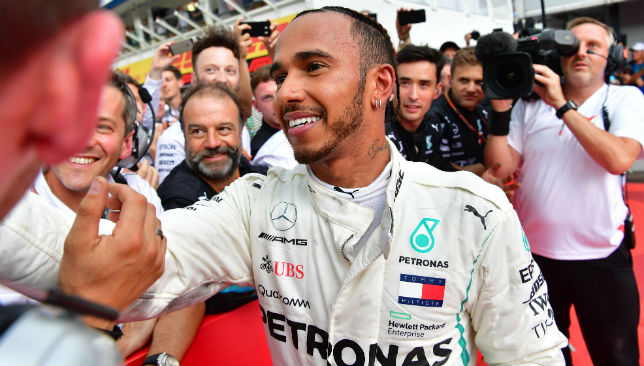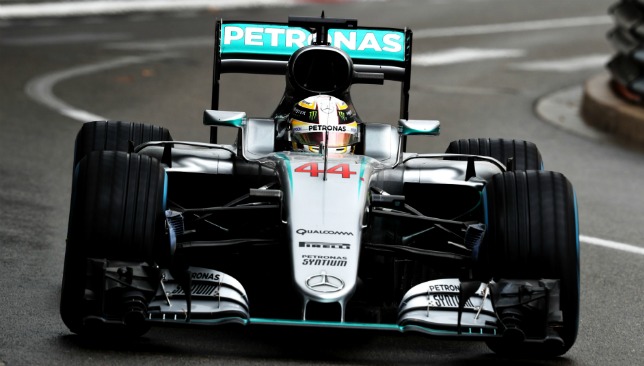
As Lewis Hamilton celebrated his fifth championship, and yet more riches, in the breathless Mexico City air, it was a world away from his humble beginnings on a Stevenage council estate.
It is easy to forget, now that he has earned a fortune of some £170million and emulated Argentinian great Juan Manuel Fangio’s tally of titles, quite what a trailblazer the young Hamilton was.
Breaking down racial barriers during a prodigious career as a junior karter, he summoned the courage to seek out McLaren boss Ron Dennis.
Hamilton was aged just 10, and wearing a borrowed dinner jacket at a central London awards ceremony, when he asked Dennis if he could drive for him. Dennis wrote in the youngster’s autograph book: “Phone me in nine years, and we’ll sort something out then.”
Hamilton did not have to wait that long. Just three years later, he signed for McLaren and was provided with a magic carpet into Formula One as the most prepared driver in the sport’s history.
Once there, he would build on the natural talent drawn from his early career which was funded by his father Anthony, who worked four jobs to set his son on the path to greatness.

On his debut in 2007, Hamilton became the first black driver to race in Formula One’s white-dominated world. He dazzled under Australian skies, before recording his first victory in June at the Canadian Grand Prix. Remarkably, he came within a single point of winning the championship in his debut year.
Twelve months later, and in typically dramatic style in Brazil, the moment arrived. Hamilton sealed his maiden title at the last corner on the last lap in the last race of the year.
He continued to notch up victories, 21 in all with McLaren, but a second championship would elude him there. The team were unable to provide him with a car quick enough to take the challenge to Sebastian Vettel, and Hamilton jealously watched on as Vettel reeled off four championships in a Red Bull superior to his McLaren machinery.
Disillusioned by failure, Hamilton, who had by now severed managerial ties with his father, considered walking away from the sport. He then took the brave decision to join Mercedes.
It was his move to the Silver Arrows which would act as a prelude to the almost unprecedented run of success which has seen Hamilton take four of the last five championships, win 50 further races, and stand alone as the man with more pole positions (81) than anyone who has gone before.
Increasingly a fixture of the celebrity scene, and the most recognisable F1 superstar since Michael Schumacher won five consecutive championships with Ferrari at the turn of the century, Hamilton would meet his nemesis in the form of his old karting team-mate Nico Rosberg.
WOW WOW WOW WOW WOW
— PETRONAS Motorsports (@PET_Motorsports) 28 October 2018
That’s 5 wow’s for 5 very special championship wins
Words cannot describe how proud we are of @LewisHamilton and the whole @MercedesAMGF1 team
One team. One dream.#HiFive ✋ #PETRONASmotorsports #f1 pic.twitter.com/G7omUpTYpZ
Although Hamilton would claim his second and third championships in 2014 and 2015, Rosberg would become the only man to beat him over a meaningful season. And, perhaps fearing he may never be able to reach such lofty heights again, the German retired just days after his 2016 triumph, denying Hamilton the chance of revenge.
His vengeance would instead come against another German. Vettel had now ditched Red Bull for the allure of Ferrari. Their battle was billed as a mouth-watering cocktail of the two most decorated drivers of their generation going head-to-head, but it was Hamilton who had more ice in his glass.
Just as in Mexico in 2017, the Briton, aged 33 and two decades after he signed for McLaren, was on Sunday crowned king of the world with two races to spare.
Earlier this year, Hamilton signed a contract to become F1’s first £40million-a-season driver, staying at Mercedes until 2020. And suddenly, Schumacher’s haul of seven titles – one many thought would never be equalled – is now firmly in sight.